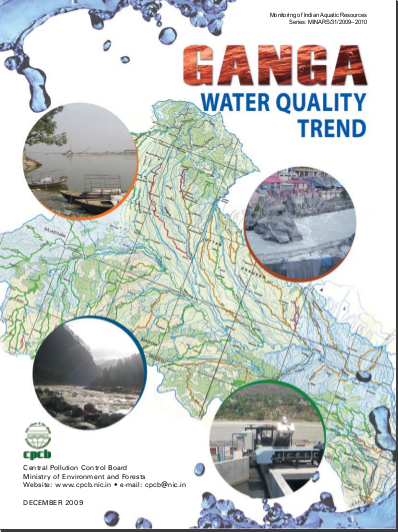/topics/contamination-pollution-and-quality
Contamination, Pollution and Quality
The real picture of arsenic pollution in West Bengal, India
Posted on 17 May, 2011 11:34 AMArsenic poisoning in these districts is a serious environmental problem and is affecting the health of millions of people in the State. The problem has been aggravated with increase in groundwater exploitation leading to leaching of arsenic located in upper layers of sediment down into the deep aquifers.
During my visits to these districts, I have had dreary experiences -
Water quality in Penukonda region of Anantapur district - A field report by Arghyam
Posted on 16 May, 2011 06:23 PMIntroduction
SEDS approached Arghyam to seek advice on the quality of drinking water in the area. Anantpur is the second most drought-prone area in India, and a lot of work has been done to deal with the water supply situation by the Government of Andhra Pradesh as well as NGOs and charities such as SEDS and the Sai Baba Trust, to name a few. There seems to be an adequate supply of water in the district, but very little or no attention has been paid to the quality of water.
Acara Challenge 2011 – Finals, 16th May, 2011 at Institute on the Environment, St. Paul Campus, Minnesota and live webcast
Posted on 16 May, 2011 12:32 PMOrganizer: Acara Institute on the Environment
Venue: Institute on the Environment (IonE) University of Minnesota, St. Paul Campus, 1954 Buford Ave, 325 VoTech Building. All presentations will be webcast live.
Description:
The Acara Challenge is a unique way for a university to get their students involved in entrepreneurship and sustainable design for social change. The purpose of the Acara Challenge is to: Engage students in a multi-discipline, multi-country collaboration to develop sustainable solutions and business models to challenging global social issues. Incubate and implement the winning plans into successful sustainable social businesses.
Sustainable urban water supply in south India : Desalination, efficiency improvement, or rainwater harvesting?
Posted on 11 May, 2011 05:26 PMAbstract:
River bank filtration in Uttarakhand - Blog post by Neelima Garg
Posted on 11 May, 2011 02:30 PMProcess of River Bank Filtration technology
Pumping induces seepage from the surface water into the aquifer and results in quality improvements enroute to the well by natural processes such as filtration, biodegradation, adsorption, redox reactions and mixing. RBF can also occur under natural conditions as a result of an influent river.
Recycling of water during distillation in laboratories and industries saves gallons of water - Blog post by Dr K K Sharma
Posted on 11 May, 2011 02:21 PMIn the process of distillation vapors passing through the condenser tube are cooled and condensed by water flowing through condenser tube in the condenser unit of the apparatus. In almost all laboratories the water used for cooling the condenser tube is coming from the water supply tap near the wash basin. The precious water after circulating through the condenser tube is left into the drain as wastewater. It has been observed that about 40 liters of water is required for cooling for making 500 ml of distilled water. The water after cooling is generally left to go into the drain.
The following video has been prepared by me and is released by youtube. The video gives good information for those who want to learn about the traditional method of glass distillation and the modified Recycling Distillation Technique (Sharma, 2004) that saves gallons of water.
An analysis of West Bengal Ground Water Resources (Management, Control and Regulation) Act 2005
Posted on 11 May, 2011 02:17 PMIntroduction
Ganga water quality trend - A report by Central Pollution Control Board (2009)
Posted on 30 Apr, 2011 05:39 PM The data has been collected over a period of many years from 39 water quality monitoring stations along the main river and 102 stations on its tributaries which were setup in 2008/09.
The data has been collected over a period of many years from 39 water quality monitoring stations along the main river and 102 stations on its tributaries which were setup in 2008/09.
The study focuses on the parameters for dissolved oxygen, (DO), biochemical oxygen demand (BOD) and faecal coliforms (FC) as these indicate the biological health of the river. The period of study for the river Ganga is 1999-2008. The study finds that most of the water quality parameters studied do not meet the standards.
Peel potential - Bananas can filter heavy metals from water - Article from Down to Earth
Posted on 25 Apr, 2011 12:26 PMThe Delhi superbug debate - A mirror reflecting our own inadequacies?
Posted on 23 Apr, 2011 07:12 PMEven with its questionable merit, the superbug study has identified the need for us to question the focus that we have on finding narrow solutions to health issues .It has also highlighted the urgent need to address the broader infrastructural needs of the country such as access to safe drinking water and sanitation
Image source: Wikimedia Commons
The superbug study
New Delhi and the world was hit by panic last week because of a recent study published in the journal The Lancet Infectious Diseases , which found a high level of water contamination acquired from drains and public taps across India's capital city. The water was allegedly contaminated with superbugs, or what has been referred to as bacteria carrying the NDM 1 gene. Four percent of drinking water samples (2 of 50 samples) and 30 percent of drain samples (51 out of 171 samples) were found to be contaminated with superbugs [1, 2].





